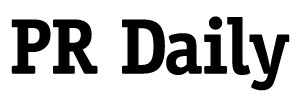Why AI is the new barometer for strategic communications
And prompts you can use right now.

Reed Handley is executive vice president, The Bliss Group.
In the rush to embrace AI for efficiency gains, many communications leaders are missing its most powerful application: as a mirror for strategic thinking. According to Accenture, 86% of C-suite leaders feel prepared to invest more in generative AI in 2025, but if marcomm teams only tap it for task automation, we’ll lose our seat at the proverbial table. AI is a tool that forces us to articulate, examine and align our work with business objectives — if used strategically.
Impact through insight: AI in action
The morning routine of today’s chief communications officer would be unrecognizable to their 2023 counterpart. Instead of spending hours sifting through media mentions and campaign data, AI-powered read-outs now deliver real-time insights before the first coffee of the day. This is the reality of communications leadership in 2025.
Here are three ways forward-thinking CCOs are using specific AI tools to transform their daily workflows:
- Morning media intelligence
- Prompt:
As a media intelligence analyst, review the following media coverage from the past 24 hours:
[Insert media coverage]
Please provide a comprehensive analysis following these parameters:
- COVERAGE ANALYSIS
– Identify the top 3 emerging narrative patterns
– List unexpected topics or angles gaining traction
– Compare coverage sentiment to industry benchmarks
- MESSAGE ALIGNMENT
– Evaluate coverage alignment with our key messages: [Insert key messages]
– Highlight gaps between intended and actual message reception
– Identify successful message penetration examples
- OPPORTUNITY/RISK ASSESSMENT
– Flag immediate reputation risks requiring attention
– Spotlight potential thought leadership opportunities
– Suggest 3 actionable next steps based on findings
- COMPETITIVE CONTEXT
– Compare our share of voice to key competitors
– Identify competitor messaging shifts
– Highlight white space opportunities in the conversation
Format the response as an executive brief with clear sections and bullet points. Include specific examples and metrics where possible.
- Stakeholder message optimization
- Prompt:
As a communications strategist, analyze our stakeholder messaging effectiveness:
Context:
– Target Audience: [Insert stakeholder group]
– Current Messages: [Insert current messaging]
– Performance Data: [Insert engagement metrics]
Please provide:
- MESSAGE PERFORMANCE AUDIT
– Break down message resonance by stakeholder segment
– Identify top-performing and underperforming messages
– Map message effectiveness against business objectives
- SENTIMENT ANALYSIS
– Chart emotional response patterns by message type
– Identify trigger points causing positive/negative reactions
– Map stakeholder journey and sentiment shifts
- ENGAGEMENT OPTIMIZATION
– List specific phrases/terms driving highest engagement
– Identify optimal message length and format by platform
– Suggest timing and frequency recommendations
- REFINEMENT RECOMMENDATIONS
– Provide 3 specific message improvements with rationale
– Suggest A/B testing scenarios for validation
– Include response templates for common scenarios
Output should include specific examples and data-driven insights.
- Reputation risk detection
- Prompt:
As a reputation risk analyst, conduct a comprehensive risk assessment:
Input Parameters:
– Industry: [Insert industry]
– Key Competitors: [Insert competitors]
– Current Issues: [Insert known issues]
Deliver analysis covering:
- SIGNAL MONITORING
– Track unusual patterns in industry conversations
– Monitor competitor vulnerability indicators
– Identify emerging regulatory or compliance themes
- RISK EVALUATION
– Score identified issues (1-10) based on:
* Probability of escalation
* Potential impact severity
* Speed of development
– Map stakeholder exposure levels
- SCENARIO PLANNING
– Develop impact scenarios for top 3 risks
– Map potential escalation pathways
– Identify critical response windows
- RESPONSE FRAMEWORK
– Provide templated responses for each scenario
– List key stakeholders to engage
– Outline specific action steps with timelines
Include quantitative metrics where possible and clear prioritization of risks.
Workflows like these help CCOs move from a reactive to proactive state, from overwhelmed to strategic. The key isn’t just having the tools; it’s knowing exactly how to deploy them for maximum business impact and resiliency in today’s permacrisis culture.
We all know that AI can be a truth amplifier or a confusion multiplier. The difference lies entirely in how we use it. When paired with strategic oversight and layers of verification, AI becomes an invaluable partner in pursuing facts over fiction and driving meaningful business impact. Without these guardrails, it can amplify biases and perpetuate misinformation.
A critical moment for communications leaders
We’re seeing the emergence of enhanced critical thinking frameworks, advanced bias detection and improved source verification capabilities. These developments promise to strengthen the alignment between AI outputs and business outcomes in ways we’re only beginning to understand.
The transformation from overwhelmed to optimized means embracing a new way of thinking about communications leadership. As we move through this year, the most successful communications executives will be those who leverage AI not just as a tool, but as a catalyst for better strategic thinking and decision-making.
Disclaimer: Written with the help of generative AI.






